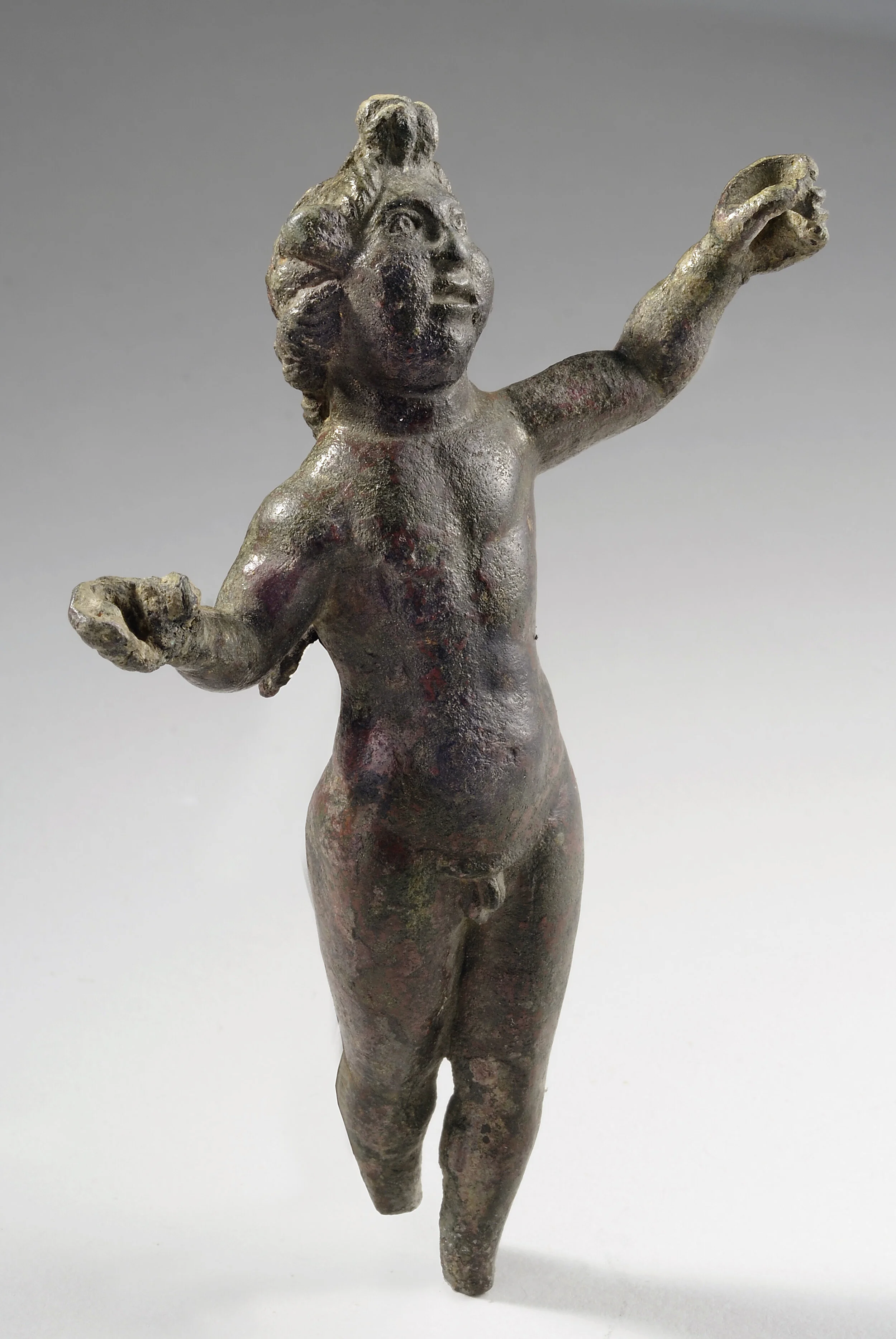Ancient Roman Bronze Mercury





Ancient Roman Bronze Mercury
Roman, 2nd century A.D.
Bronze
H: 14.2 cm (5.5 in)
Serial: 1230
This remarkable bronze figurine which is a solid cast preserves a beautiful silverfish-green patina. A few areas have been chiseled after casting, the surface is rubbed. The youthful god of commerce, Hermes in Greek mythology and Mercury in Roman, is represented here with several attributes indicating his multiple duties. As one of the supreme gods, he attends their reunions and feasts; thus, his head is adorned with a large wreath fastened at the back with long ribbons the ends of which lie over his shoulders. As messenger of the gods he wears the winged shoes and the winged cap, these are omitted from this representation, but small wings are seen on both sides of the head above the wreath. The herald’s staff, or caduceus, with two entwined snakes at the top, is shown in his left hand and is leaning against the shoulder. The staff possessed magic powers, one of which was to bring a dream sometimes associated with a sudden death. Mercury was the guide of souls to the underworld; in this duty he was associated with the Egyptian god Thoth, the judge of the dead, who was depicted with the head of an ibis, and here we see a plume of an ibis at the center of Mercury’s wreath. Because of his activities as messenger and guide he was a traveler never at rest - the traveler’s long cloak, a chlamys, is seen hanging over his left forearm. The long fabric makes several zigzag folds that fall to the ground, the folded drapery serving as a kind of support for the leaning figure. Mercury is also the protector of financial gain and commerce. Here he holds a purse full of coins, in a bag made of skin that preserves the shape of a small animal. Short incisions indicate the fur and we also can see that there are the incised dots on the upper left side of caduceus, meant to represent the scales of the serpent skin.
Mercury is depicted as a naked and athletically built young men. His trained body shows large groups of muscles that are clearly formed. The figure, though standing, is in motion, illustrated by the contrasting stance of legs, the slightly twisted torso and the turn of the head. This Roman work shows that it is under the influence of Greek Hellenistic sculpture. The preferred model of proportions: with elongated legs and corpulent torso, long neck and a somewhat small but well-modeled head, point up these characteristic similarities. Small bunches represent curls above a tall forehead; the facial features are especially attractive. It is not enough to say that they are delicate in rendering and regular in shape as this would be usual in the art of the period, some of the features, and namely the frowning eyebrows that create deep shadows below the pronounced nose bridge and the upward glance recall the portraits of Alexander the Great. It is not certain, however, if the statuette is a direct copy after a statue of Alexander in the guise of Hermes or if this is already an adaptation popular in the statues representing the Hellenistic rulers and the Roman emperors.
Figurines of the deities were primarily used as votive offerings to be carried to the temples; the Romans were also known to keep little shrines, lararia, for private worship in their homes. The range of the statuettes was determined by the choice of the family’s divine protectors. This statuette of Mercury is different and does not appear to be a standard type of a figurine that would stand on a base. The soles of the feet do not create a stance on a flat surface, and it should be observed that the edge of the falling drapery is even lower than the toes making it impossible for this piece to be fixed on a flat base. One possibility might be that the figure was at one time attached to a curving surface, perhaps as a handle of a large ceremonial vessel.
CONDITION
The top of caduceus is missing; parts of hanging chlamys broken and reassembled; surface of abdomen and genitalia on the front side as well as the right calf, buttock, back on the right side and left elbow on the back side was rasped, probably in antiquity.
PROVENANCE
Ex- European private collection, acquired in 2000.







